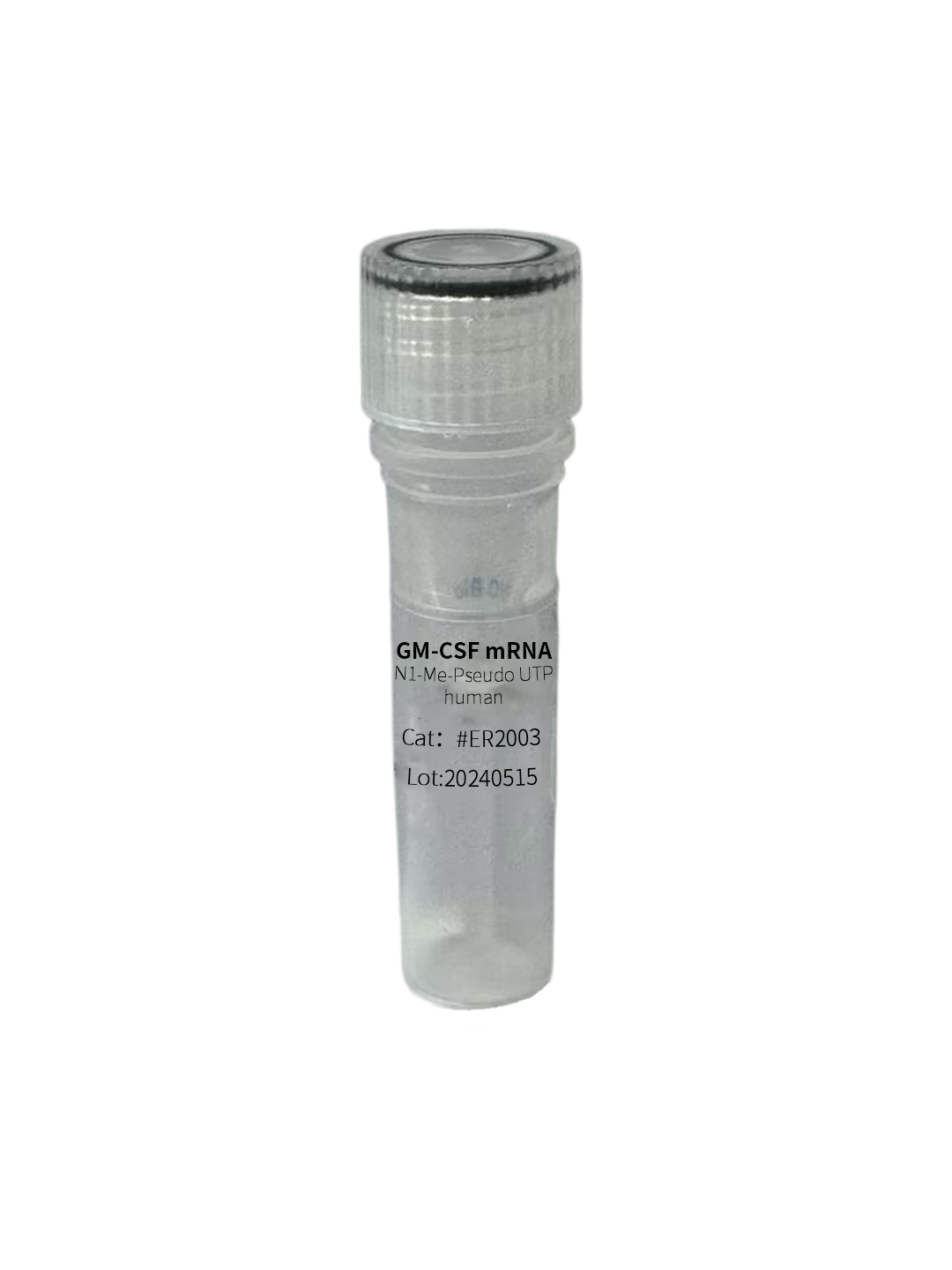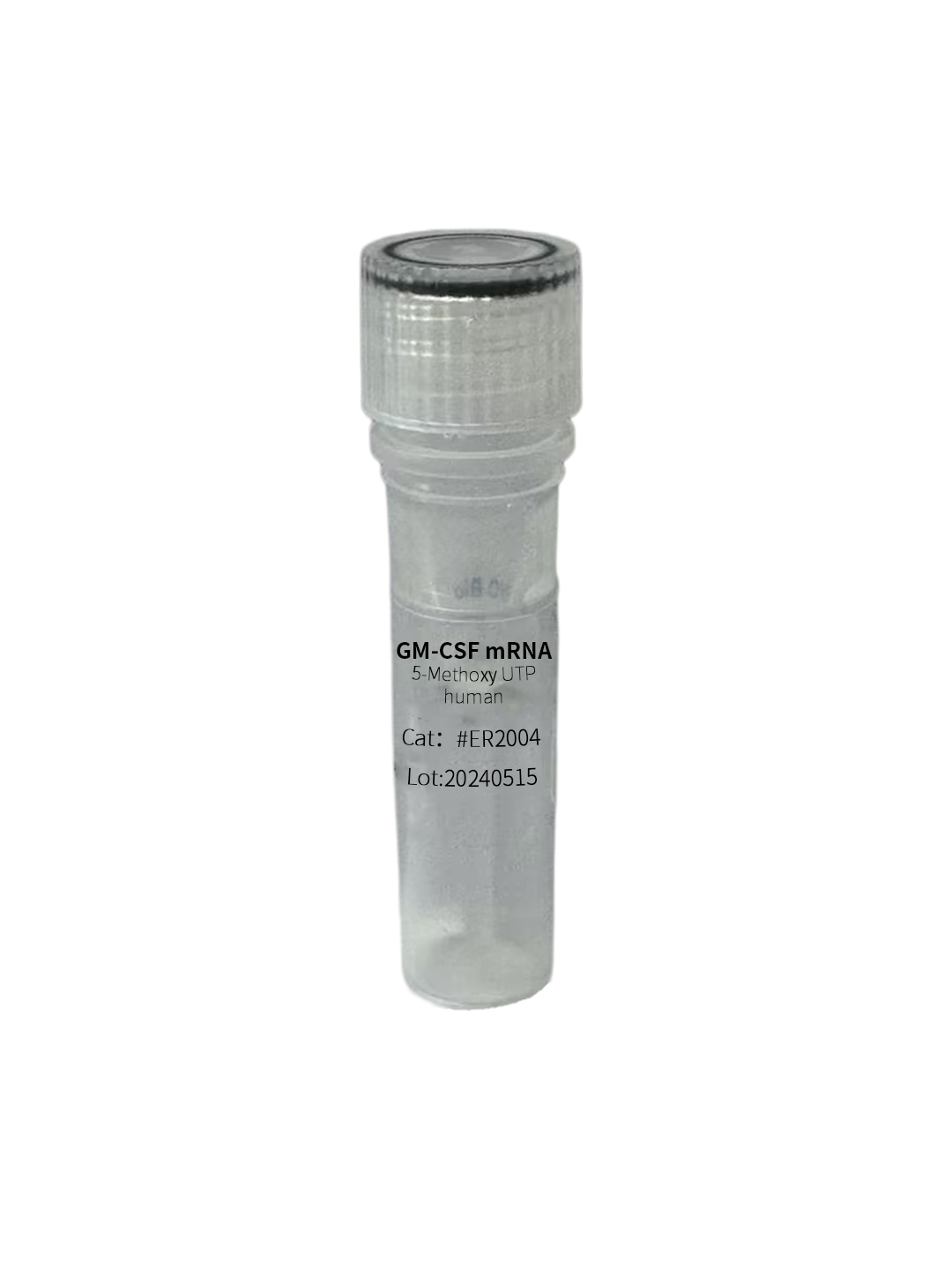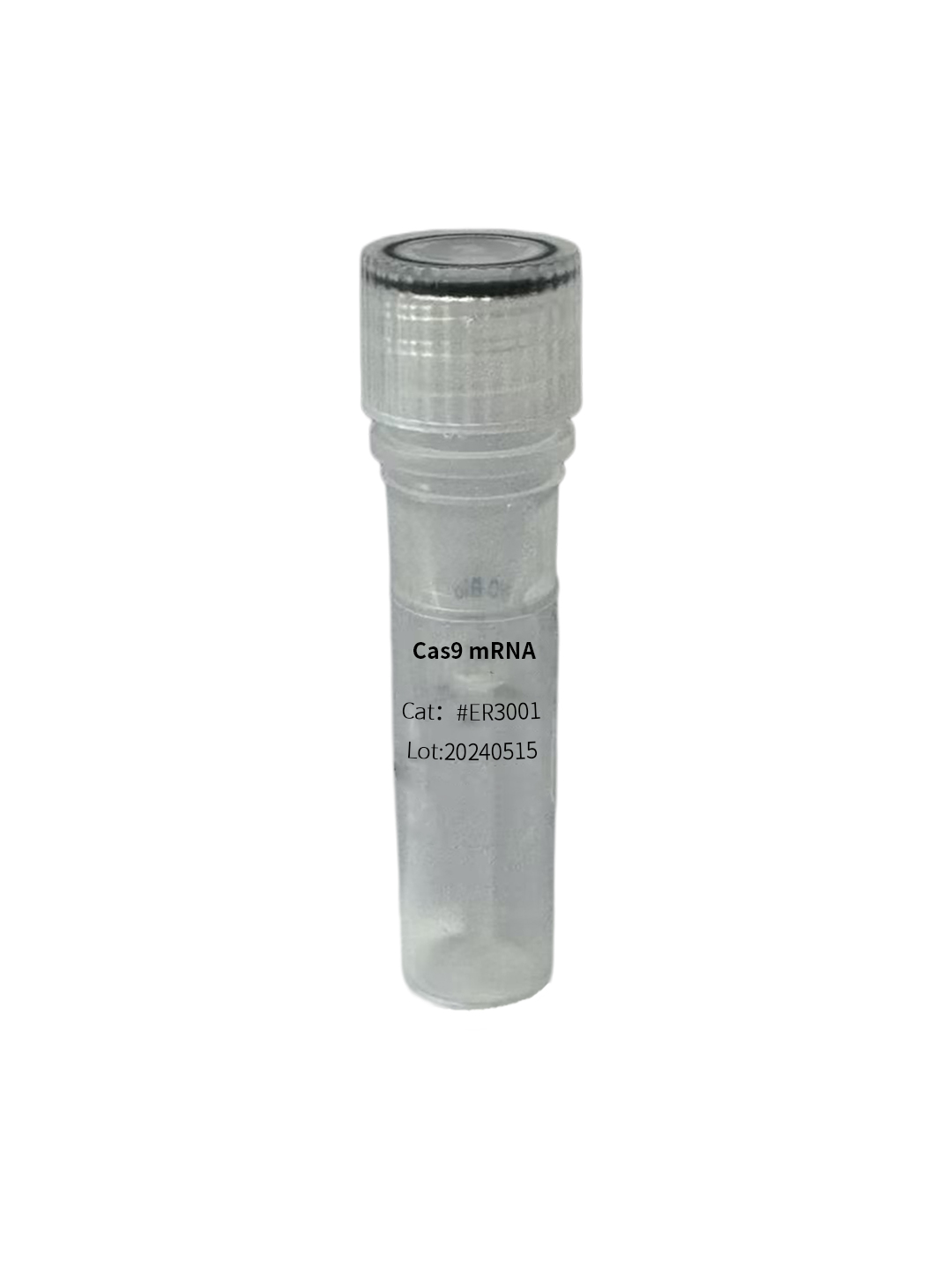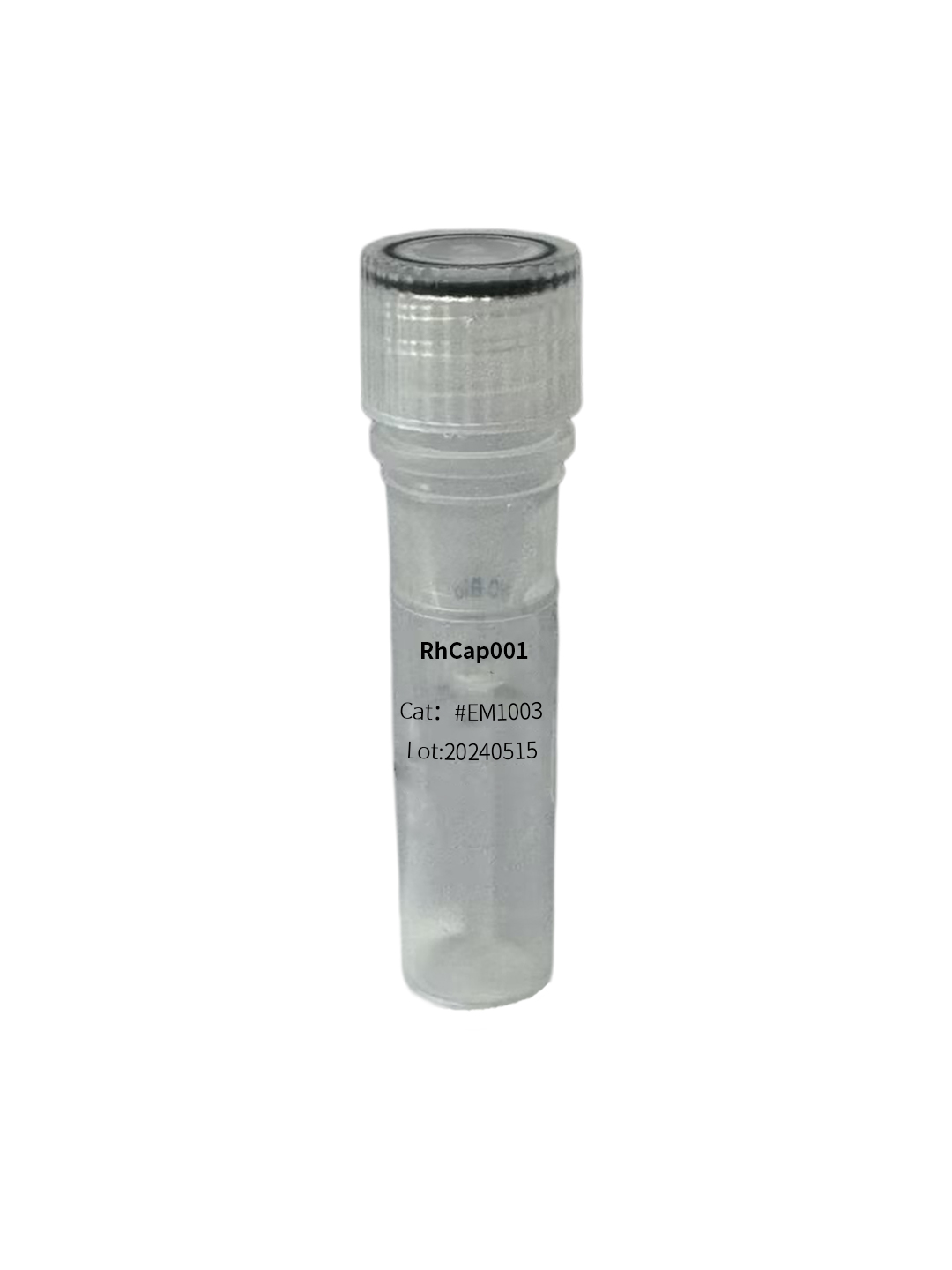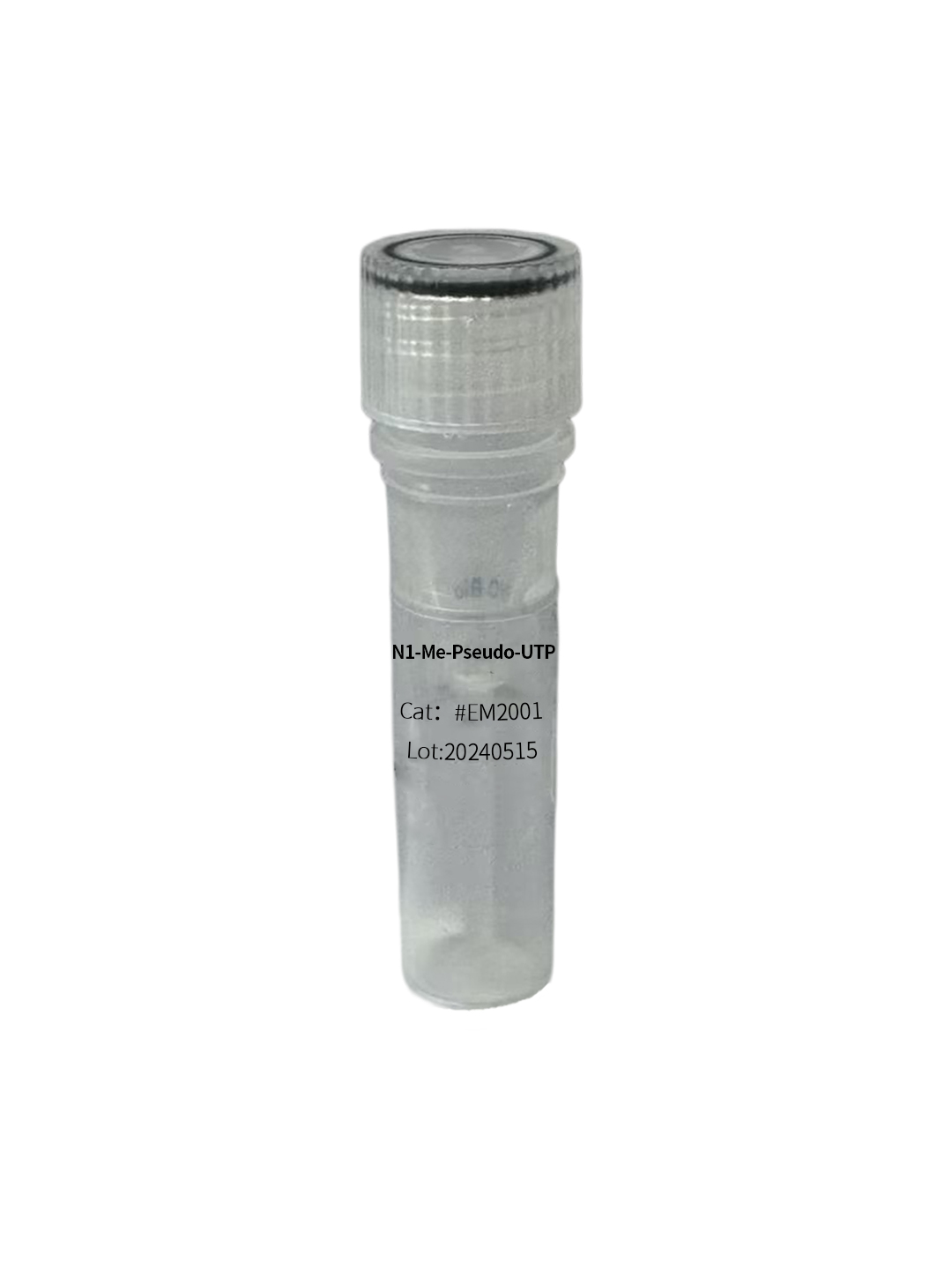mRNA Spot products
web design
mRNA Spot products
GM-CSF mRNA(N1-Me-Pseudo UTP), Human
GM-CSF, also known as granulocyte-macrophage colony-stimulating factor, is a protein in mice that stimulates the formation of granulocytes and macrophages from bone marrow precursor cells. It has various physiological functions, primarily promoting the generation, differentiation, activation, and survival of these cells. Additionally, it plays a critical role as a homeostatic factor in the alveoli of the lungs, aiding in the development and long-term maintenance of alveolar macrophages. This mRNA is capped with Cap1 structure and N1-Me-Pseudo UTP modification. The UTR and poly A regions have been optimized with proprietary intellectual property rights to significantly enhance mRNA translation and expression for reduced immunogenicity and cellular toxicity.
mRNA Spot products
GM-CSF mRNA(5-Methoxy UTP), Human
GM-CSF, or granulocyte-macrophage colony-stimulating factor, is a protein that stimulates the formation of granulocytes and macrophages from bone marrow progenitor cells. It has various physiological functions, primarily promoting the production, differentiation, activation, and survival of these cells. Additionally, it is a critical homeostatic factor in the lungs, where it is involved in the development and long-term maintenance of alveolar macrophages. The GM-CSF mRNA used in this study is a special type called 5-Methoxy UTP, which has been modified with Cap1 structure and 5-Methoxy UTP to optimize its UTR and poly A regions. This modification significantly improves mRNA translation efficiency and expression levels, while reducing its immunogenicity and cytotoxicity.
mRNA Spot products
Cas9 mRNA
Cas9 mRNA is modified with Cap1 and poly A structures, using N1 methyl pseudo-uridine, to enable expression of Cas9 protein from Streptococcus pyogenes in eukaryotic cells. The N-terminal and C-terminal of the Cas9 protein contain NLS sequences, allowing it to enter the cell nucleus. By binding with sgRNA, the Cas9 protein can target and cleave genomic DNA, creating double-strand breaks that can be repaired through NHEJ or HDR mechanisms for gene editing. The C-terminal of the Cas9 protein is tagged with HA for analysis and detection purposes.
core raw materials for mRNA synthesis
RhCap001(ammonium salt)
RhCap001 is a new type of cap-like object with proprietary intellectual property rights. This product is used for transcription with a starting sequence of 5'AG3'. Compared to the Cap1 and Cap0 generated by traditional capping methods, the EM1003 cap structure allows mRNA to have higher in vivo activity and translation efficiency.
core raw materials for mRNA synthesis

